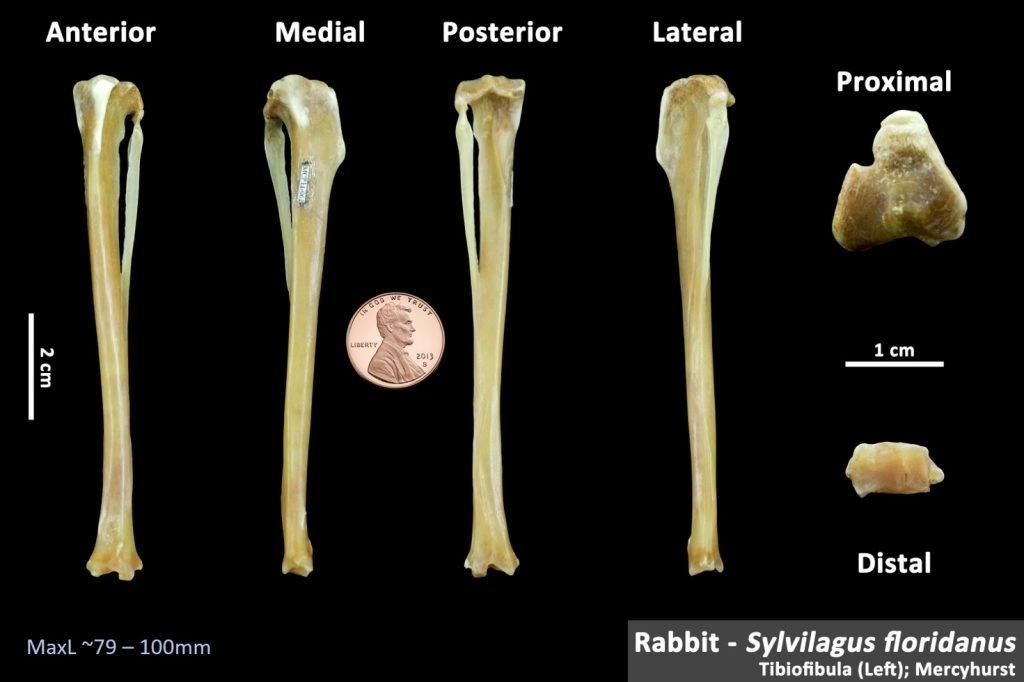When a law enforcement agency receives a call to investigate skeletal remains, any number of specialists might answer that call, including forensic anthropologists, medical examiners, coroners, crime scene investigators, or death investigators.
Although most experienced forensic anthropologists can distinguish human bones from animal bones with relative ease, assigning non-human bones to a particular species can be a bit trickier if the investigator does not have extensive zoological training.
There may be times when someone with less training must decide whether remains are likely to be human. That determination is critical; if they believe the remains are human, law enforcement must secure the scene and investigate further.
The assistance of a tool to quickly, easily, and reliably determine the species associated with a bone could save valuable time and resources.
Published reports suggest that 25%-30% of a forensic anthropologists’ caseload consists of non-human elements, such as bones and teeth from other species.[1]
Dr. Heather Garvin’s group from Des Moines University Osteopathic Medical Center created a free and easy-to-use searchable online database (OsteoID). They compiled simple measurements and visual comparisons so that a person could easily identify the species of a bone by using this tool. The group, funded by a grant from the National Institute of Justice, also created a decision tree for determining species as well as accuracy estimates for using their database to distinguish human from non-human bones.
OsteoID includes metric data, quality photographs of exemplar species elements, and 3D scans that users can access freely online.
The Database: Variety of Species, Measurements, and Photos
Dr. Garvin’s group designed the OsteoID to allow individuals to search by common name, genus, species, bone type, or measurements. The OsteoID database includes 28 species commonly found in North America (Table 1), with human and non-human bone measurements derived from museum samples, published manuscripts, and databases. In total, the dataset includes 59,442 measurements from 18,867 bones.
Researchers measured the bones and calculated statistics for each bone sample (including mean, minimum, maximum, and two standard deviations) to allow OsteoID to filter by species. For every species, each bone element (e.g., humerus, radius, ulna, femur, tibia, and fibula) includes at least six photos in different orientations (see Figure 1 for example).
High Degree of Accuracy
Although forensic anthropologists qualitatively assess bone size and shape when assigning skeletal species, prior to this work the researchers noted only one other published study that showed support for the utility of basic long bone measurements (called osteometrics) to differentiate human from non-human remains.[2] However, that study had a small sample size and included only a few species from one specific geographic region.
Dr. Garvin’s study comprises a much larger dataset and supports earlier suggestions that long bone measurements can be diagnostic in distinguishing species. Dr. Garvin’s group used statistics and decision trees from their extensive dataset to develop predictive models to support human versus non-human determinations from long bones.
When the investigators pooled the various bone types, OsteoID assigned species with 91% accuracy and correctly distinguished human from non-human remains over 95% of the time.[3] Thus, the researchers showed that OsteoID could help achieve high identification accuracy rates even without first distinguishing which type of bone they were analyzing.
If the investigators initially identified the type of bone (e.g., humerus, radius, femur), then the accuracy for distinguishing human from non-human remains increased further (up to 99%). This was true for all models except the tibia-specific (89%) and ulna-specific (87%) models, which were slightly less accurate.
Limitations
The researchers only used skeletally mature individuals in this study, which could obscure the amount of variation present in the long bone measurements. In addition, the sample sizes for all species were not equal. Given that the human sample size is large and that humans also have longer bones than many of the other species included in the study, there may be some bias towards assigning an unknown bone as human, though classification rates remained high (generally above 90%).
Quick, Confident Species Determination in the Field
In summary, OsteoID provides a central location for forensic investigators to find species-specific images and resources to determine species from skeletal remains that:
- Could be a reliable preliminary assessment tool to distinguish human from non-human remains.
- May help law enforcement and medicolegal personnel as they make decisions about securing a scene when a forensic anthropologist’s opinion is not available.
- Could save agencies money and resources and minimize the possibility that law enforcement dismiss human remains as non-human.
Forensic anthropologists or other medicolegal personnel can use OsteoID to support classification and species identification. The online resource may also be beneficial to other disciplines, such as wildlife forensics, bioarchaeology, zooarchaeology, veterinary medicine, and biology.
About This Article
The work described in this article was supported by NIJ award number 2018-DU-BX-0229, awarded to Des Moines University Osteopathic Medical Center.
This article is based on the grantee report “OSTEOID, A New Forensic Tool: Developing a Practical Online Resource for Species Identification of Skeletal Remains,” (pdf, 18 pages), by Heather Garvin, Ph.D., D-ABFA.



